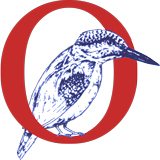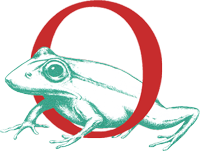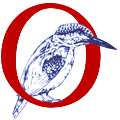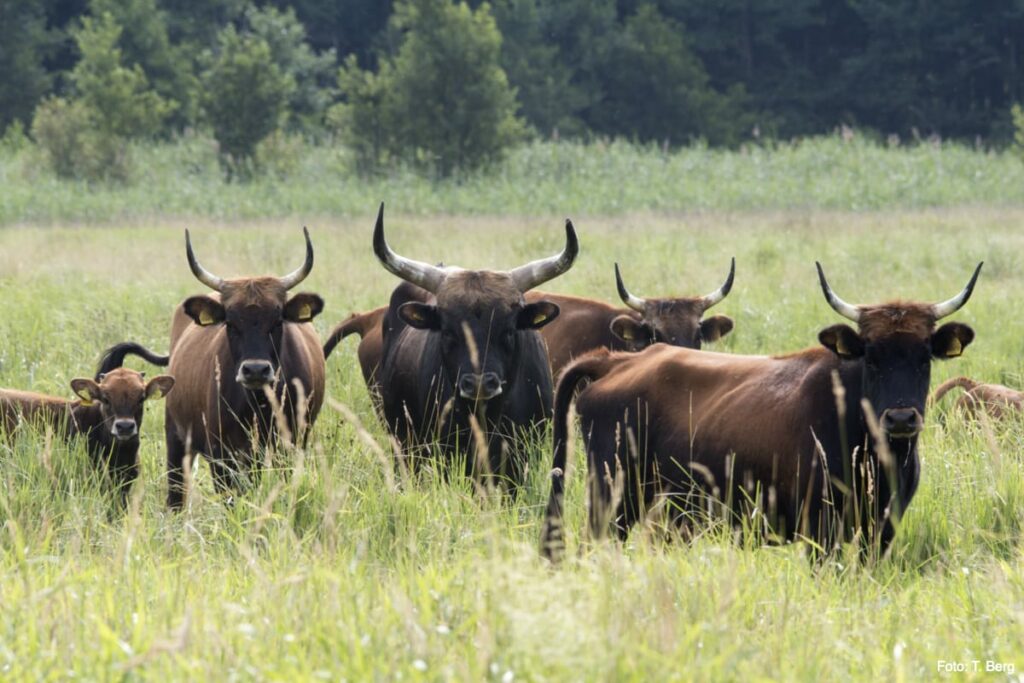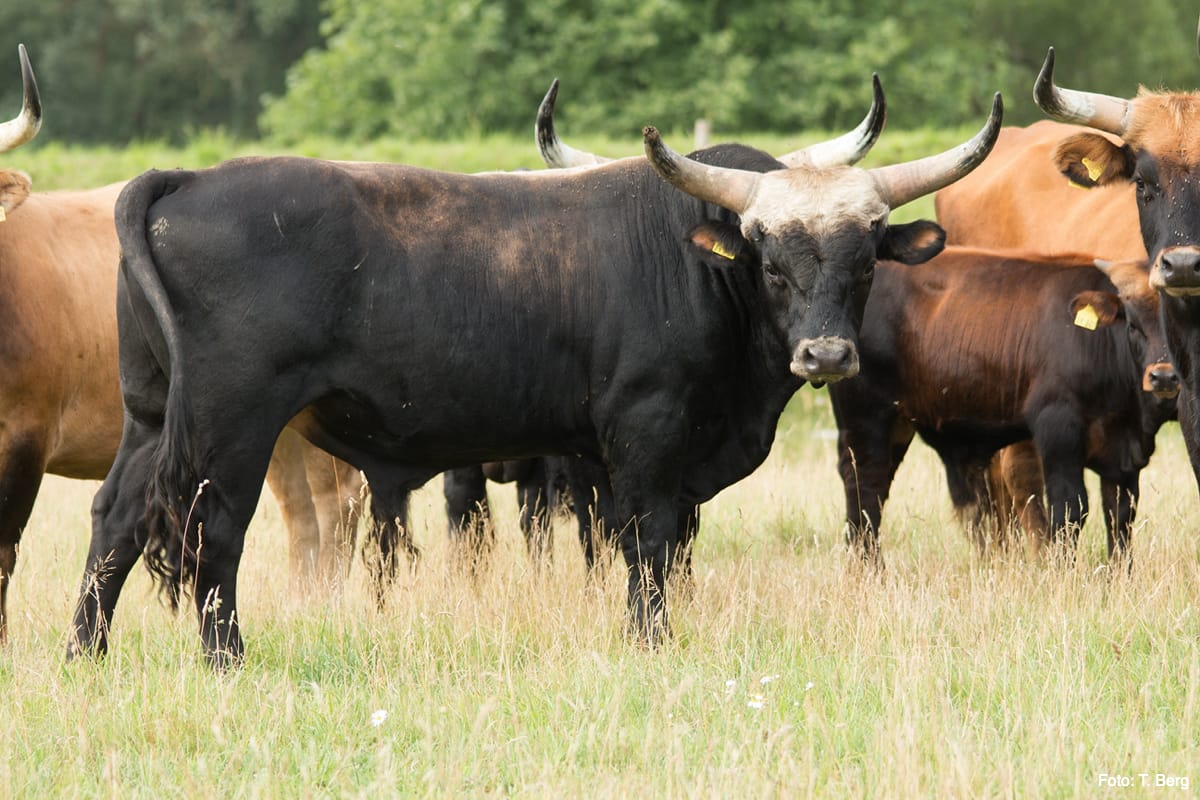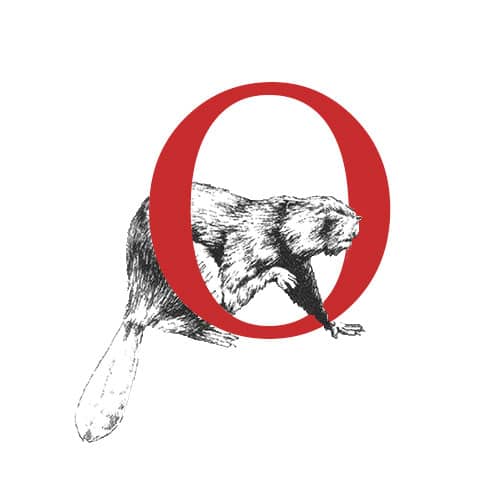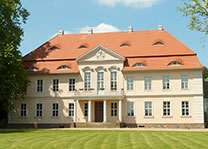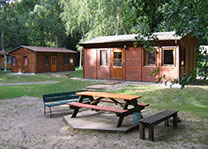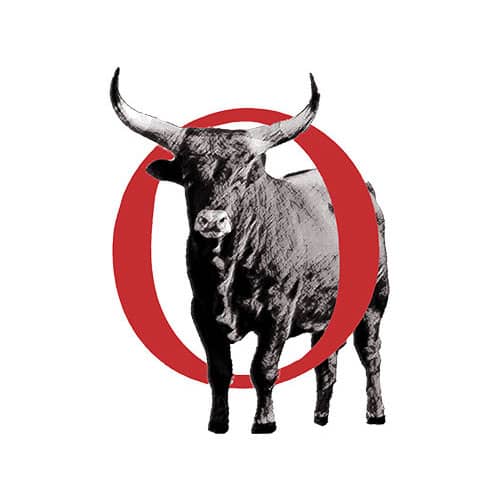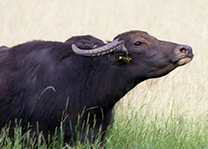- Aurochs in the Lower Oder Valley National Park
In the 1930s there were attempts in the Berlin and Munich zoo to “breed back” the aurochs from primitive domestic cattle breeds. The zoo directors in Berlin and Munich were the brothers Heinz and Lutz Heck. The results of their breeding and their offspring are called Heck cattle.
Even if back-breeding an extinct animal is not really possible, the breeding results are remarkable. The outside of the Heck cattle is now very similar to the aurochs, which we know from historical representations and can reconstruct from skeletal remains. However, the Heck cattle have not yet reached the impressive size of the extinct aurochs. Bulls have reached shoulder heights of 160 cm to 180 cm and a weight of 1,000 kg. Since the 1990s attempts have been made to remedy this deficiency by crossing large cattle breeds. The animals resulting from these breeding experiments are called Taurus cattle.
Heck cattle have been used in nature conservation projects for several decades because they are very robust, can be kept outdoors all year round and give birth to their calves without human help. If they have a sufficiently large pasture available, they can manage without additional feeding — except in times of need.
Because the animals are kept here in low grazing density, they structure the landscape in a (almost) natural way. During the growing season they eat the parts of the vegetation that are obviously particularly tasty. Other things stand still. In the winter time of need, the excess stocks are then grazed. This creates a vegetation mosaic that is attractive to many otherwise rare insect and bird species.
In 2010 our association settled these primeval animals on an area between Lunow and Stolzenhagen on the southern edge of the national park. In the meantime we have the attitude of the specially founded Öko Agrar GmbH Lower Oder Valley to hand over. She keeps and breeds the aurochs on now five large pastures.
There they live under almost natural conditions. We only have to limit their scope of action by coupling the areas.
Since they multiply and especially male animals cannot be kept together in any number, we also slaughter regularly. The meat of the animals that live here almost under natural conditions is of very high quality.
The wild pasture
On these pastures near Lunow — outlined here in red on the map — you can observe aurochs and the Konik horses or Exmoor ponies. However, both pastures are quite large, the northern one a good 60 hectares. It may be that the animals are standing far away or have laid down in the tall grass to rest. It takes a little luck if you want to see the animals. But it is definitely worth a visit. The northern area is best seen from the canal dike. To do this, walk (or ride your bike) from Lunow over the bridge and then to the left (to the north) in the direction of Stolzenhagen or from Stolzenhagen over the bridge to the right (to the south) in the direction of Lunow. In addition to aurochs, you will also come across Exmoor ponies on this pasture. On the southern pasture area — located on the Oder-Neisse cycle path between Lunow and the Oder — you can watch aurochs and Koniks.
- Aurochs bull in the Lower Oder Valley National Park
